How to Assign Transparent Color in Clip Art Studio
Then, you only scanned or took a moving-picture show of your hand-drawn line art with your smartphone and, you get to color information technology to find that it simply doesn't look as set to color as the original. At times similar these, it'south best to excerpt your line work and catechumen information technology into something more suited for digital coloring. You tin do this by using the Catechumen Brightness to Opacity function in Clip Studio Pigment and SAI or the Alpha Aqueduct part in Photoshop.
Adjusting the Prototype Color
Using our graphics software of option, we'll begin past opening the scanned or photograph image of our illustration.

Fifty-fifty though the original image is black lines on white newspaper, the imported prototype ends up with either a gray tone to information technology, or the lines aren't every bit potent equally in the original. To fix this event, we will adjust the epitome and so that the background is completely white and the lines are solid and clear. The method we volition use to attain this depends on the graphics software we desire to use.
Photoshop & Clip Studio Paint
Commencement, we'll conform the color using an aligning layer (Tonal Correction layer).
● Effulgence/Contrast
Utilise Effulgence/Contrast to brighten the overall image.
In Photoshop:
Layer card > New Adjustment Layer > Brightness/Dissimilarity
In Clip Studio Paint:
Layer menu > New Correction Layer > Brightness/Contrast
From the displayed card, use the Brightness slider to brand the paper groundwork as white as possible without losing also much line art detail.
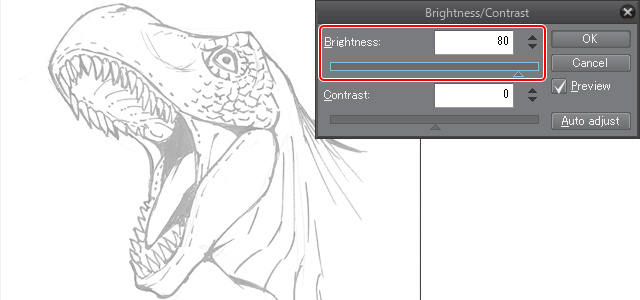
● Level Correction
Adjacent, use Level Correction to make the lines more distinct.
In Photoshop:
Layer menu > New Adjustment Layer > Levels
In Clip Studio Paint:
Layer carte > New Correction Layer > Level Correction
From the displayed menu, operate the triangle nodes at the bottom of the graph past dragging them right or left as needed. This allows you to whiten the color and shadows of the newspaper, besides as thicken and darken the line work.
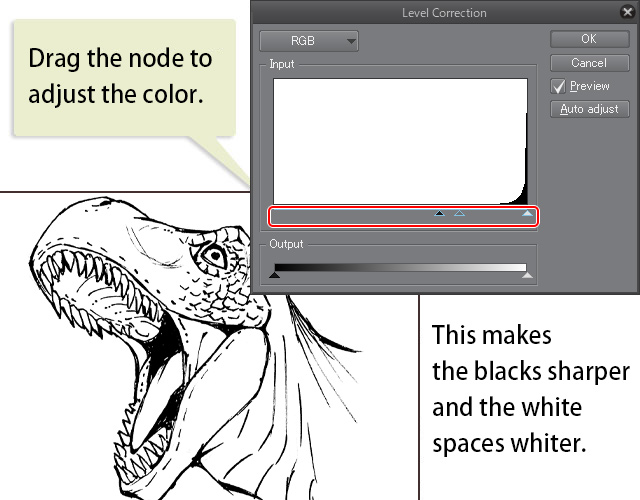
Once complete, the adjustments volition be created in the grade of an adjustment layer (Tonal Correction layer). If you aren't quite satisfied with the results, double click the adjustment layer icon to display the carte du jour again and readjust your settings.
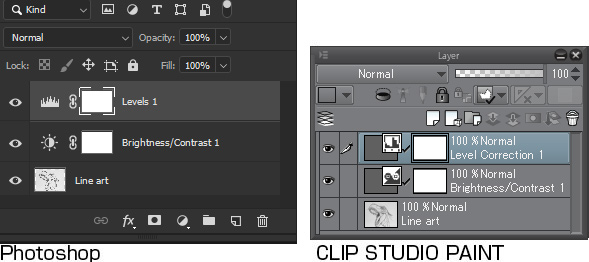
Lastly, select the Layer carte du jour > Flatten image and the line art layer volition merge with the adjustment layer (Tonal Correction layer).
Simply in case, I recommend saving your file in one case before merging.
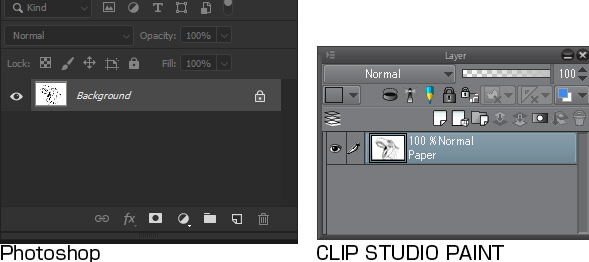
Adjusting the Image Color: Paint Tool SAI
For SAI, select and set the Filter menu > Brightness/Contrast settings.
In the Brightness and Contrast dialog, adjust the Brightness slider so that the paper appears white. Make sure that thin lines exercise not disappear or become also sparse while adjusting. One time satisfied, click OK.
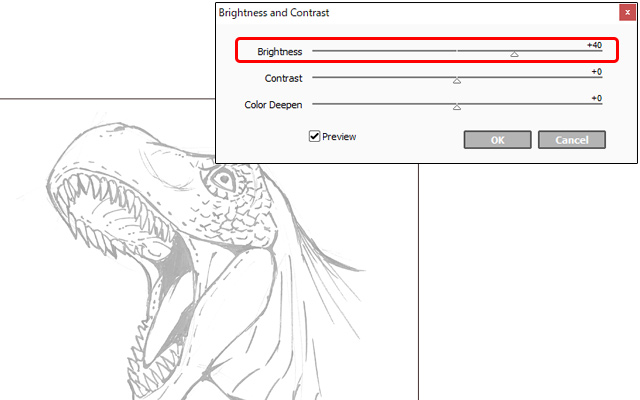
Select the [Filter] menu > [Effulgence/Contrast] again.
This time, conform the [Contrast] and [Brightness] sliders to darken the lines. Take intendance that lines don't go also thick or extend by your original line work.
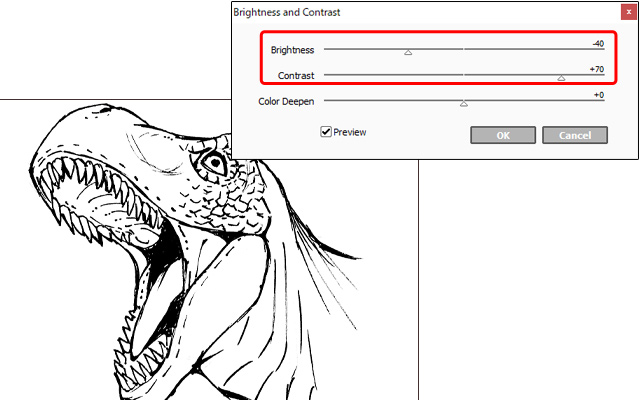
Completing the colour adjustments
Compared to the original image, we have created much nicer looking line art, nighttime lines on a white background.
In guild to brand the coloring step go more than easily, we will "excerpt" the line work by transforming the white groundwork into a transparent groundwork.
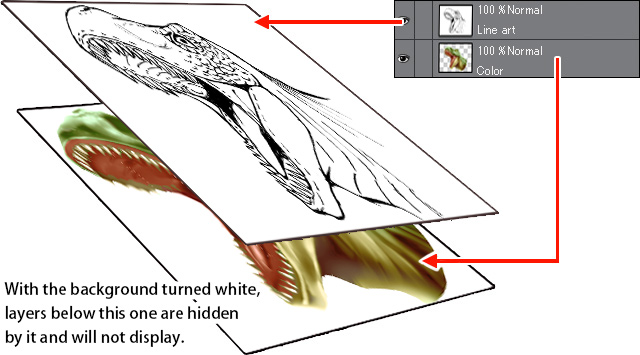
Extracting Line Art: Clip Studio Pigment & SAI
We volition turn the white transparent by using "catechumen brightness to opacity." Select the following commands to do this.
Clip Studio Paint:
Edit carte > Convert brightness to opacity
SAI:
Layer bill of fare > Luminance to Transparency
With this, the line art has been extracted!

Note:
Afterward using Clip Studio Pigment'southward Convert brightness to opacity, a transparent checkered pattern will appear.
Select the Layer menu > New Layer > Paper to create a new newspaper layer over the transparent blueprint.
Extracting Line Fine art: Photoshop
Using Alpha Channel, we will turn the white transparent.
The Alpha Channel role can extract transparency, uses selections every bit a mask for editing, and has a saving ability.
Notation: The Alpha Channel characteristic cannot be used in Photoshop Elements.
● Cutting the line art
Permit's cutting the line art from the canvas.
(1) Select the Selection card > All
(2) Select the Edit carte du jour > Cut
● Creating an Alpha Channel
Select the Window card > Channels to display and create an Alpha Channel.
(1) Click Create New Channel from the Channels panel
(2) Select the created Alpha Channel
(iii) Select the Edit carte du jour > Paste to paste the line fine art to the Alpha Aqueduct.
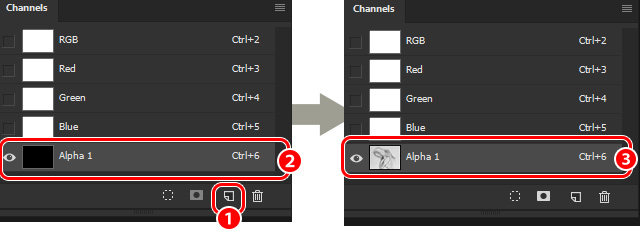
● Creating a selection
Let's at present create a selection based on the opacity and line thickness.
(1) Select the Selection menu > Load Selection
(2) Select the Alpha Aqueduct we used earlier from Channels
(3) Check Capsize and click OK
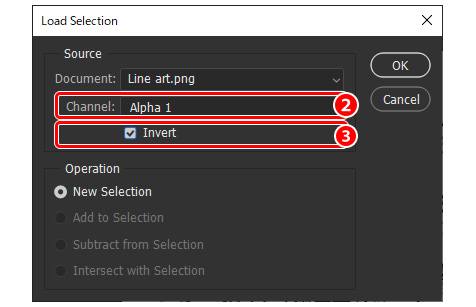
● Creating line art
Next, nosotros'll make a new layer based on the line art.
(1) Create a new layer by selecting Create a New Layer from the Layer panel
(two) A canvas with the dimensions of the selected area volition appear
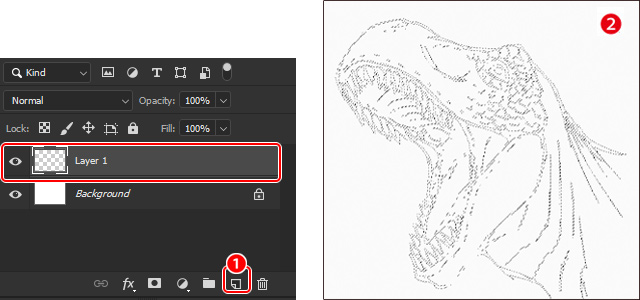
(3) Select the Edit bill of fare > Fill up
(4) Select a color to fill from Contents
(5) Uncheck the Preserve Transparency option and click OK
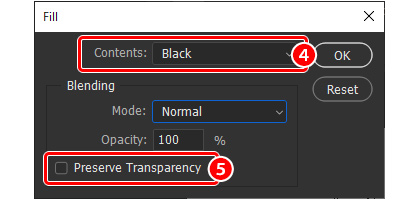
With this, the line art has been extracted!
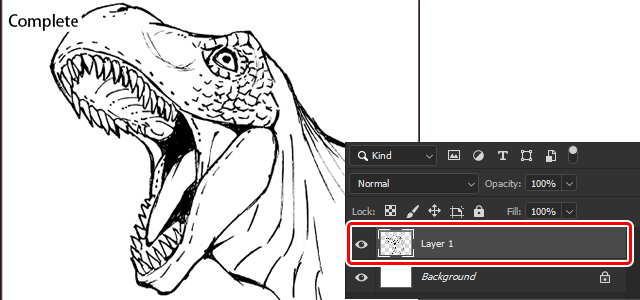
The Line Art is Now Ready!
With this finished line art, you can add colored layers underneath the line art without erasing the lines.
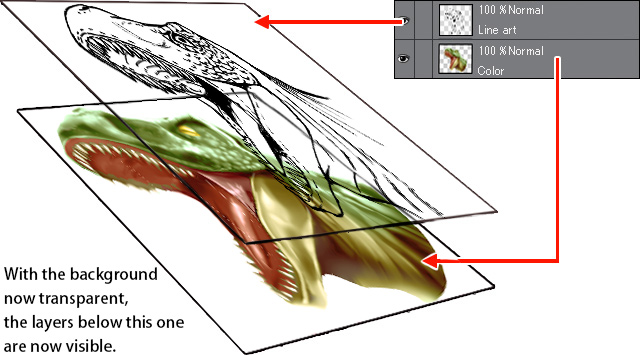
Source: https://www.clipstudio.net/how-to-draw/archives/154453
0 Response to "How to Assign Transparent Color in Clip Art Studio"
Post a Comment